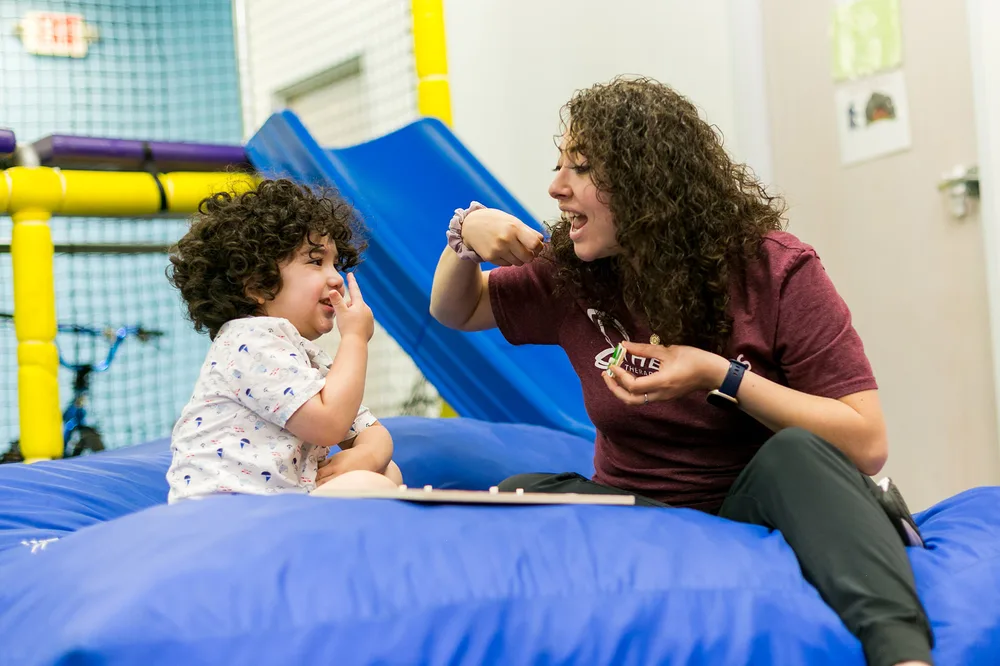Speech Therapy
Our Speech-Language Pathologists receive additional training to support bilingual language development. They target receptive and expressive language delays, fluency (stuttering), phonological and articulation delays, apraxia of speech, and alternative or augmentative communication (AAC).


Occupational Therapy
A child’s work is play, and Occupational Therapy utilizes play and other methods to encourage development. We serve children with developmental delays, difficulty with coordination, sensory processing difficulties, and delayed performance in activities of daily living, feeding difficulties, and food aversions. Occupational Therapists address the barriers of function inhibiting the children from performing at age-appropriate levels in the areas of play, ADLs, IADLs, social participation, and behavioral regulation. Occupational Therapy is a unique field that treats patients holistically by addressing both the physical and mental deficits that limit independence and overall health.
Physical Therapy
Physical Therapists work with children and their families to ensure proper gross motor development to ensure their ability to interact with their environment safely, have the ability to participate and interact with their peers successfully, and ensure maximal ability to participate and perform activities of daily living. Physical Therapy improves a child’s range of motion, flexibility, strength, balance, coordination, and movement patterns through play, exercises, caregiver education, and additional equipment needs such as wheelchairs and orthotics.
Physical Therapy also serves to rehabilitate children after injury or surgery and assists patients with disabilities so they can attain, maintain, and improve functions for daily living.


Feeding Therapy
Feeding Therapy targets picky eating, feeding disorders, oral motor delays and disorders, and dysphagia.
ABA Therapy
ABA (Applied Behavior Analysis) is an evidence-based therapy based on the science of behavior, and focuses on skill acquisition and teaching socially-significant behaviors, including functional communication, daily living skills, and social skills, while minimizing and replacing the use of challenging behaviors. The methods utilized are data-driven and based on research, with the overall goal of teaching and reinforcing behaviors that lead to an improved quality of life. ABA is not a “one-size-fits-all” model, and each program is tailored to the needs of the individual and their families. ABA is currently one of the most effective treatments for individuals diagnosed with Autism, according to the U.S. Surgeon General, the American Psychological Association, and the American Academy of Pediatrics.

Doctor Testimonials


